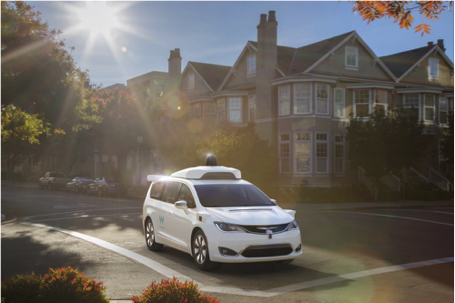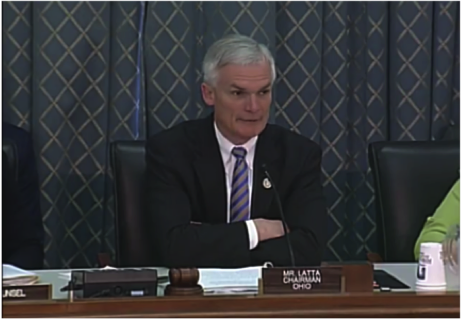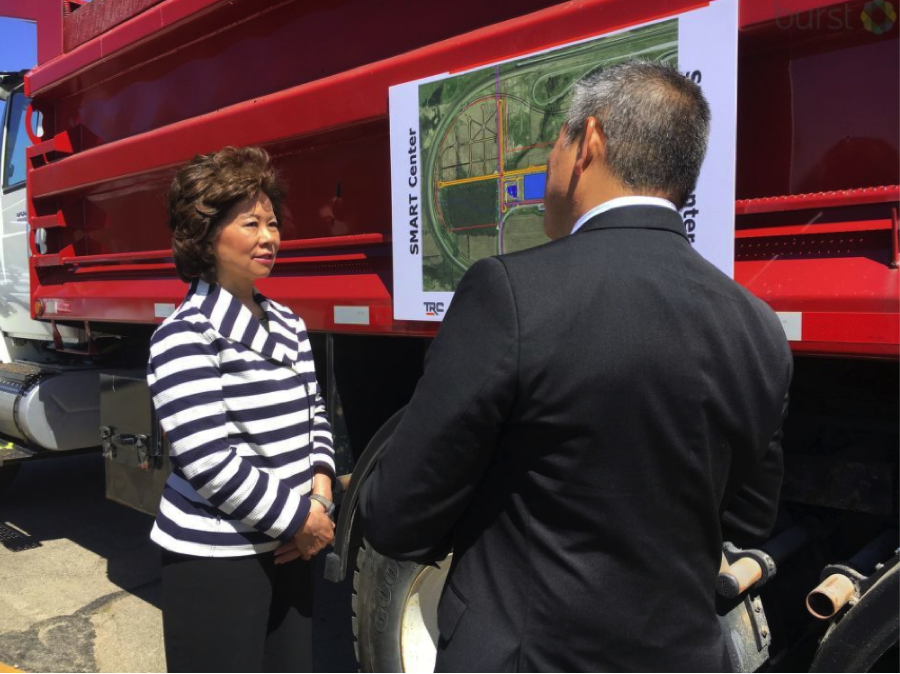April 27, 2017
 From San Francisco to Boston, there is no shortage of excitement for the potential of self-driving cars to make America’s roads safer, more efficient, and pleasant to traverse. Impassioned arguments for saving many of the 40,000 lives lost every year to traffic accidents by accelerating the deployment of automated vehicles (AVs) have already led 39 states and the District of Columbia to consider or enact policies to support this nascent technology.
From San Francisco to Boston, there is no shortage of excitement for the potential of self-driving cars to make America’s roads safer, more efficient, and pleasant to traverse. Impassioned arguments for saving many of the 40,000 lives lost every year to traffic accidents by accelerating the deployment of automated vehicles (AVs) have already led 39 states and the District of Columbia to consider or enact policies to support this nascent technology.
Meanwhile, federal policymakers have long been reticent to take action to regulate this technology for fear of stifling innovation. The autonomous technology in AVs is currently not subject to federal motor vehicle safety standards (FMVSS), effectively creating a regulatory Wild West that has empowered automakers and tech firms to freely experiment with AVs.
In the decade since Google launched its self-driving car project (now known as Waymo), AV developers have relished this freedom to innovate without prescriptive federal regulations. In numerous Congressional hearings and interactions with the National Highway and Traffic Safety Administration (NHTSA), AV developers urged federal policymakers to exercise regulatory restraint.
But this is all about to change.
In the past six months, automakers and tech firms have changed their tune. Appearing before Congress and NHTSA, they have expressed concerns that their success will result in regulatory ruin as a deluge of state laws place disparate rules around the testing and deployment of AVs. The result has been a patchwork of regulations across the US that immensely complicates their entry into states with enacted policies with reporting requirements, testing restrictions, and exhaustive application processes.
The solution, they argue, is for Congress and NHTSA to preempt these laws with federal statutes that will allow AVs to operate anywhere.
In the last few months the Senate, House of Representatives, and U.S. Department of Transportation (USDOT) have leapt into action.
In the Senate, Commerce Committee Chairman John Thune (R-SD) and Sen. Gary Peters (D-MI) are drafting a bill to ensure developers continue the safe development of AVs under federal oversight. In the three months since the announcement of their joint effort on this bill, the committee has reportedly conducted over 150 meetings with a variety of automakers, tech firms, safety advocates, the disability community, and other stakeholders.
Details of the bill remain scant due to the complexity of establishing policies for the nascent technology and the litany of concerns expressed by stakeholders. However, the legislation is expected to be released by the end of this summer, before Congress departs for its August recess.
The primary focus of the bill will be to grant FMVSS exemptions that would allow automakers and tech firms to test AVs on public roads on a large scale. In particular, company partnerships like GM and Lyft are planning to provide on-demand ridehailing services with AVs beginning as early as this year – an endeavor that they believe will simultaneously advance industry experience operating AVs on public roads while increasing consumer confidence.
Exemptions are currently capped at 2,500-5,000 vehicles, contingent on the category. Many AV developers have argued that these existing caps would limit their efforts to small, localized fleets rather than expansive operations that would yield immense amounts of operational experience on public roads.
Multiple sources familiar with ongoing discussions of the bill have said that the Senators are considering lifting the existing cap for vehicles demonstrating significant safety benefits from 2,500 to 100,000 – or creating a new exemption category that is explicitly for AVs.
Meanwhile, the House Energy & Commerce Committee is rumored to be privately circulating proposed legislation around AVs.
While the focus of the bills remains unclear, Chairman Greg Walden (R-OR) has expressed a great deal of enthusiasm for AVs and has advocated for their ongoing development with limited restrictions.
 And Rep. Bob Latta (R-OH), chairman of the Digital Commerce and Consumer Protection Subcommittee that oversees NHTSA, has a local interest in AVs. His district borders the Ohio Transportation Research Center (TRC), a NHTSA vehicle testing center and one of the largest independent testing grounds for new vehicle technologies.
And Rep. Bob Latta (R-OH), chairman of the Digital Commerce and Consumer Protection Subcommittee that oversees NHTSA, has a local interest in AVs. His district borders the Ohio Transportation Research Center (TRC), a NHTSA vehicle testing center and one of the largest independent testing grounds for new vehicle technologies.
Just last week, Latta toured TRC to tout the benefits of AV testing grounds and advocate for Congress to take a “real world perspective” to regulating AVs. In a statement afterwards Latta said, “I look forward to working with my colleagues in developing the right legislative approach to supporting and implementing this new technology.”
A previous attempt by the General Services Administration (GSA) to relocate NHTSA testing away from TRC may cause Latta to advance legislation that will solidify its designation as a testing ground for AVs and other advanced vehicle technologies. (Note: Senator Rob Portman (R-OH) fervently opposed the failed attempt to move the center – his May 2015 letter to GSA can be viewed here.)
Meanwhile, Transportation Secretary Elaine Chao has been intently focused on understanding the AV policy landscape and is reportedly evaluating an update to the Federal Automated Vehicle Policy Statement (FAVP) that USDOT released last September. (See ETW’s detailed analysis of the FAVP here.)
At this week’s policy summit hosted by the Alliance for Transportation Innovation (ATI21), Nat Beuse, Associate Administrator for Safety Research at NHTSA, indicated that the Secretary is holding meetings on AVs almost daily to formulate the department’s next steps on AVs.
Beuse indicated that the response to the FAVP was largely positive and the agency is now conducting AV research across five different categories:
- Testing & evaluation: Exploring how AVs should be evaluated on test tracks, public roads, and potentially in computer simulations. “The idea that you can do everything on a race track is just a false sense of security,” said Beuse.
- Human factors: Understanding how AVs interact with humans in the driver seat, other cars on the road, bicyclists, pedestrians, and other road users;
- Benefits: Evaluating the true benefits of reaching higher levels of vehicle automation;
- Cybersecurity: Establishing best practices to test systems, protect increasingly connected vehicles, and studying the true vulnerabilities and risks inherent in advanced vehicle technologies;
- Design: Researching how vehicle designs may change as traditional assumptions about cars are disrupted (e.g., all occupants seated forward, drivers who are able to reach the steering wheel)
During her tour of TRC on Monday at Portman’s invitation, Chao expressed enthusiasm for the technology and emphasized the importance of public-private partnerships in developing testing grounds for automated vehicles.
“I am so pleased to see firsthand a public-private partnership that will help make the automotive industry and Ohio a leader in the President’s plan to create jobs and growth in the innovation economy,” Chao stated.
It would seem that President Donald Trump’s recent meetings with automotive and tech executives have brought AVs to his attention as well.
According to a local news channel Chao said, “The president is very interested in autonomous vehicles.”

(Source: ABC 22/FOX 45 Dayton via Twitter)

 From San Francisco to Boston, there is no shortage of excitement for the potential of self-driving cars to make America’s roads safer, more efficient, and pleasant to traverse. Impassioned arguments for saving many of the 40,000 lives lost every year to traffic accidents by accelerating the deployment of automated vehicles (AVs) have already led 39 states and the District of Columbia to consider or enact policies to support this nascent technology.
From San Francisco to Boston, there is no shortage of excitement for the potential of self-driving cars to make America’s roads safer, more efficient, and pleasant to traverse. Impassioned arguments for saving many of the 40,000 lives lost every year to traffic accidents by accelerating the deployment of automated vehicles (AVs) have already led 39 states and the District of Columbia to consider or enact policies to support this nascent technology. And Rep. Bob Latta (R-OH), chairman of the Digital Commerce and Consumer Protection Subcommittee that oversees NHTSA, has a local interest in AVs. His district borders the Ohio Transportation Research Center (TRC), a NHTSA vehicle testing center and one of the largest independent testing grounds for new vehicle technologies.
And Rep. Bob Latta (R-OH), chairman of the Digital Commerce and Consumer Protection Subcommittee that oversees NHTSA, has a local interest in AVs. His district borders the Ohio Transportation Research Center (TRC), a NHTSA vehicle testing center and one of the largest independent testing grounds for new vehicle technologies.


